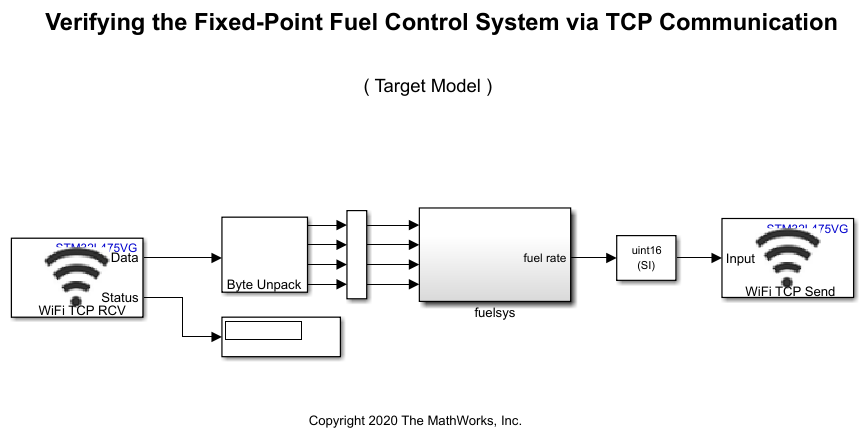WiFi TCP Receive
Add-On Required: This feature requires the Embedded Coder Support Package for STMicroelectronics STM32 Processors add-on.
Libraries:
Embedded Coder Support Package for STMicroelectronics STM32 Processors /
STM32L475VG-Discovery (B-L475E-IOT01A)
Description
The WiFi TCP Receive block receives data from a remote host or other hardware over a wireless network.
At each time step, the Data port outputs data as a vector of the size specified in the Data size (N) parameter. The Status port outputs 0 or a nonzero value indicating whether new data is received. 0 at the Status port indicates that a valid data is received.
Note
Your antivirus software or firewall might block TCP traffic. Configure the software to allow traffic from a specific IP port number.
Limitations
The sample time of the WiFi TCP Send and WiFi TCP Receive blocks should be more than 0.1 s, as the WiFi module on the board does not support sending data at a faster rate.
The maximum number of times a server can be started or restarted on the board is three. So:
The maximum number of blocks supported in the server mode is three.
When the model has a block in the server mode, and the client connected to that block/port gets disconnected for some reason, the server is restarted on the board for that block/port.
When you configure the block in the client mode, the remote server must be up and running before deploying the model that contains the WiFi TCP Send block to the target. If server is not running, there will be some fixed waiting time (while trying to connect to the server) at every execution. This might lead to overruns until the server is up again.
When using the WiFi TCP Send, WiFi TCP Receive, ThingSpeak Read, and ThingSpeak Write blocks in a model, the blocks must have the same sample time as the driver code is nonreentrant.
Ports
Output
Parameters
Extended Capabilities
Version History
Introduced in R2021a


